Super easy homemade wholewheat pizza base that is great for baby-led weaning, practicing pincer grasp and for toddlers. A healthier version of the traditional pizza that you can make for (and with) the whole family.
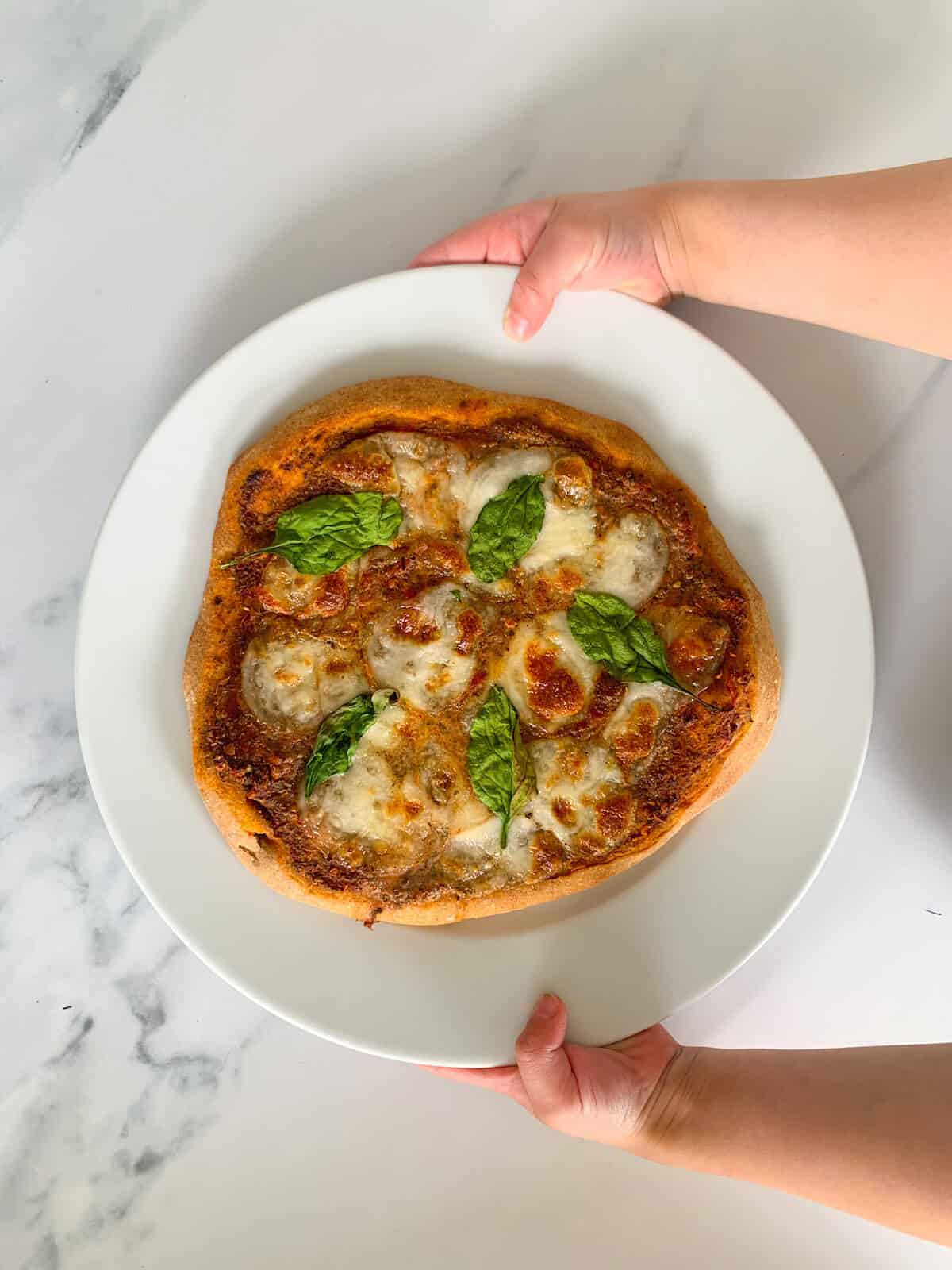
Who doesn't love pizza! I know I do. But I do have issues with restaurant and store-bought ones. And it has a bit to do with the nutritional value and a lot more with the available pizza choices and their taste.
I don't like salty pizzas. And most takeaway or frozen options are just too salty for me, and certainly for children. This is often due to the pizza toppings used and the type of cheese they use.
I mostly choose vegetarian and veggie-filled pizzas but the other issue here for me is that they almost always have onions and peppers. And I don't like onions and peppers. So you see my dilemma...
Since this COVID lockdown era we can only get takeaway pizza anyway. So I just decided a few weeks ago that I don't want to be disappointed anymore and decided to make my own pizza.
My 22-month old was the first one who tested it and if he approved I'm sure you will too!
You can also make this for babies of any age (subject to testing allergens beforehand) for baby-led weaning, as a finger food and even adapt it to suit your picky eater if you have one.
Jump to:
Nutrition And Ingredients
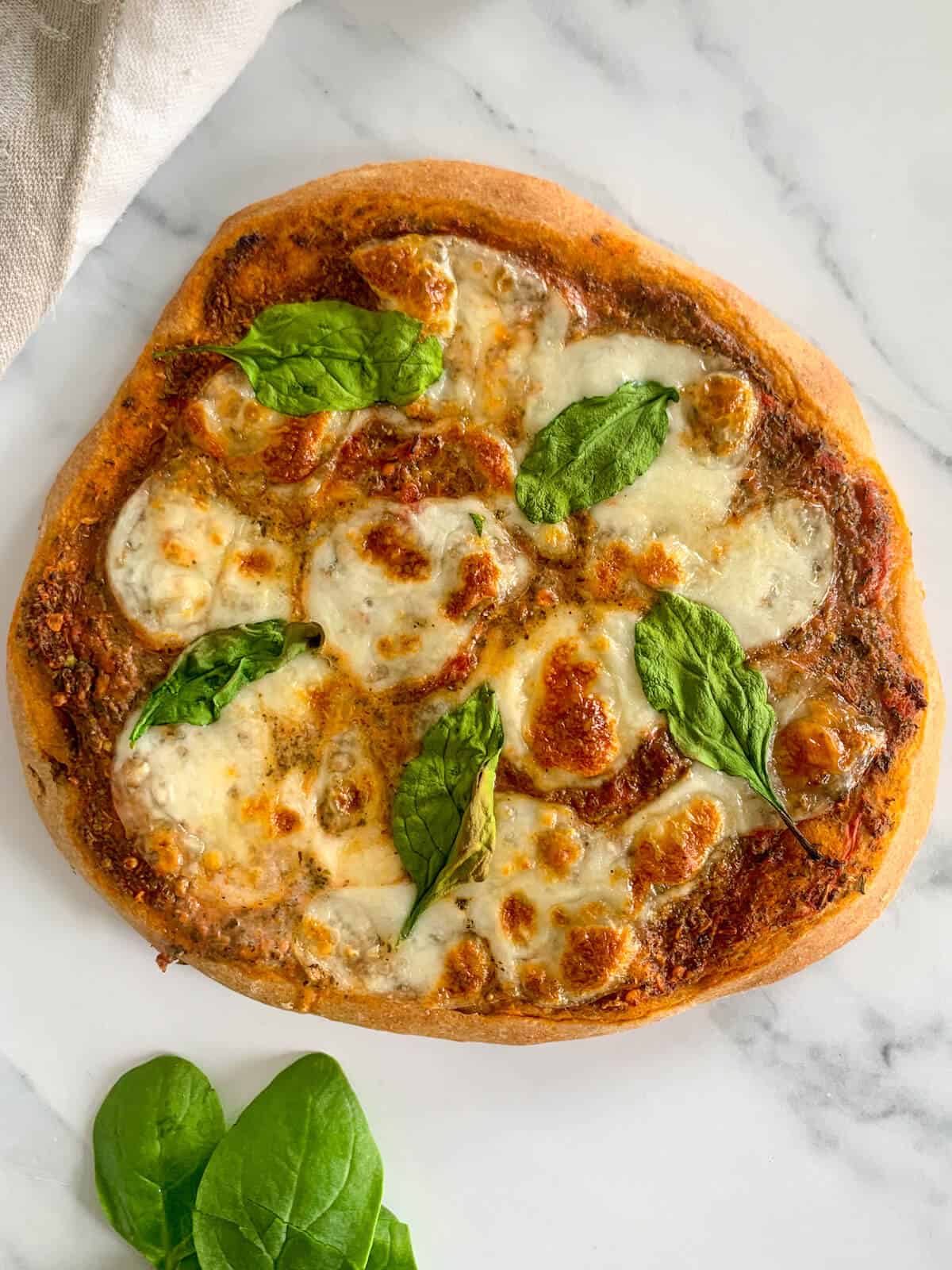
Wholewheat Flour
- Wholegrain spelt flour is more digestable than regular wheat flour, especially for babies and toddlers. However, it is not always available so wholewheat flour is a great alternative
- Wholewheat flour contains far more nutrients than regular white flour, including minerals such as iron, magnesium and manganese but also complex carbohydrates and fiber
Tomato Sauce
- I am lucky enough to have homemade tomato sauce from homegrown tomatoes available. Every autumn/fall, a family friend makes batches and batches of homemade tomato sauce and I buy at least 30 liters to store in the pantry until the next autumn/fall. However, there are tonnes of great store-bought options you can get instead
- Tomatoes are a great source of vitamins C and K as well as a specific nutrient called lycopene. Lycopene is an antioxidant which can be beneficial to the cardiovascular system
Mozzarella
- Mozzarella cheese is always my first choice of cheese for pizza toppings because of its nutritional value and low sodium content
- You can use both shredded or cut up mozzarella, just make sure you cover your pizza thoroughly so it is super cheesy. Also, make sure it is not too watery or your base might end up a little soggy
- A great source of calories, protein and fat
Spinach
- Use fresh spinach (not frozen) as with frozen spinach there can be an excessive release of water on top of the pizza which will also result in a soggy base
- Spinach is filled with minerals such as iron, potassium, and magnesium but also vitamins A, C, and folate
- A great way to introduce spinach to your baby/toddler
Basil
- I like to use dried basil for the pizza. Firstly because I don't have fresh basil available at all times and secondly because the aroma and taste is not as intense for babies and toddlers
- If you do choose to use fresh basil then don't add it to the tomato sauce but rather put it on top of the pizza once it is baked
- Although it is used in small amounts, it does provide some amounts of vitamin K and some antioxidant and anti-inflammatory properties
Oregano
- Mix the dried oregano with the tomato sauce
- Has vitamin B6 and vitamin E
How To Make Homemade Wholewheat Pizza
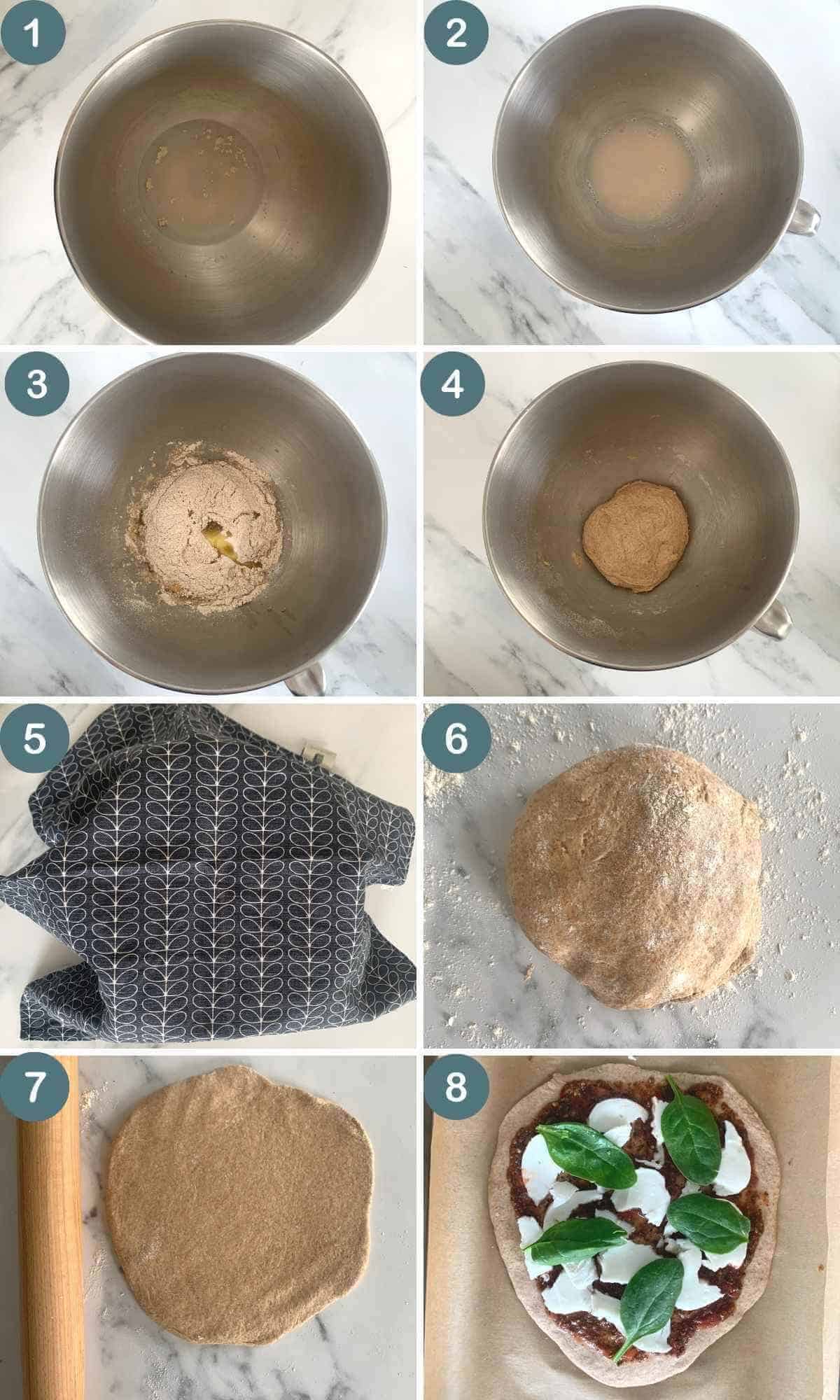
Prepare the yeast. Dissolve ½ teaspoon of sugar in half a cup of warm water. Sprinkle ½ teaspoon of dried active yeast and mix with a fork. Leave in a warm place for 5 minutes until the surface is foamy.
Prepare the crust. To the yeast mixture add the flour, salt, olive oil and mix (either with your hands or in a mixer). You should mix for about 8 - 10 minutes so the gluten can form in the dough. The dough should be soft and elastic but not sticky. Cover the dough with a clean cloth and leave to proof in a warm place for at least an hour. The dough won't rise a lot and that is ok.
Roll out your crust. Sprinkle a bit of flour on a clean surface. After the dough has proofed gently mix it again with your hands and divide into 2 equal balls. Using a rolling pin, form the shape of your pizzas. If doing a round pizza it will be about 8 inch pizza. You can also leave it a bit thicker on the edges if you want a thicker crust.
Prepare for baking. Preheat the oven to 230°C / 450°F. Line an oven tray with parchment paper and transfer the pizza dough on the oven tray.
Top your pizza. Mix the tomato sauce with the dried basil and dried oregano and divide into 2 bowls. Spread the tomato from one bowl over one pizza. Arrange half of the mozzarella over the tomato sauce. Add half of the washed fresh spinach. You can choose to chop it up as well. I prefer to use whole spinach leaves as I mostly use baby spinach so they are smaller in size. You can use any other toppings that you like of course!
Bake and repeat. Bake for about 10 minutes (until the edges are nice and crispy but not burnt). Repeat everything with the second pizza.
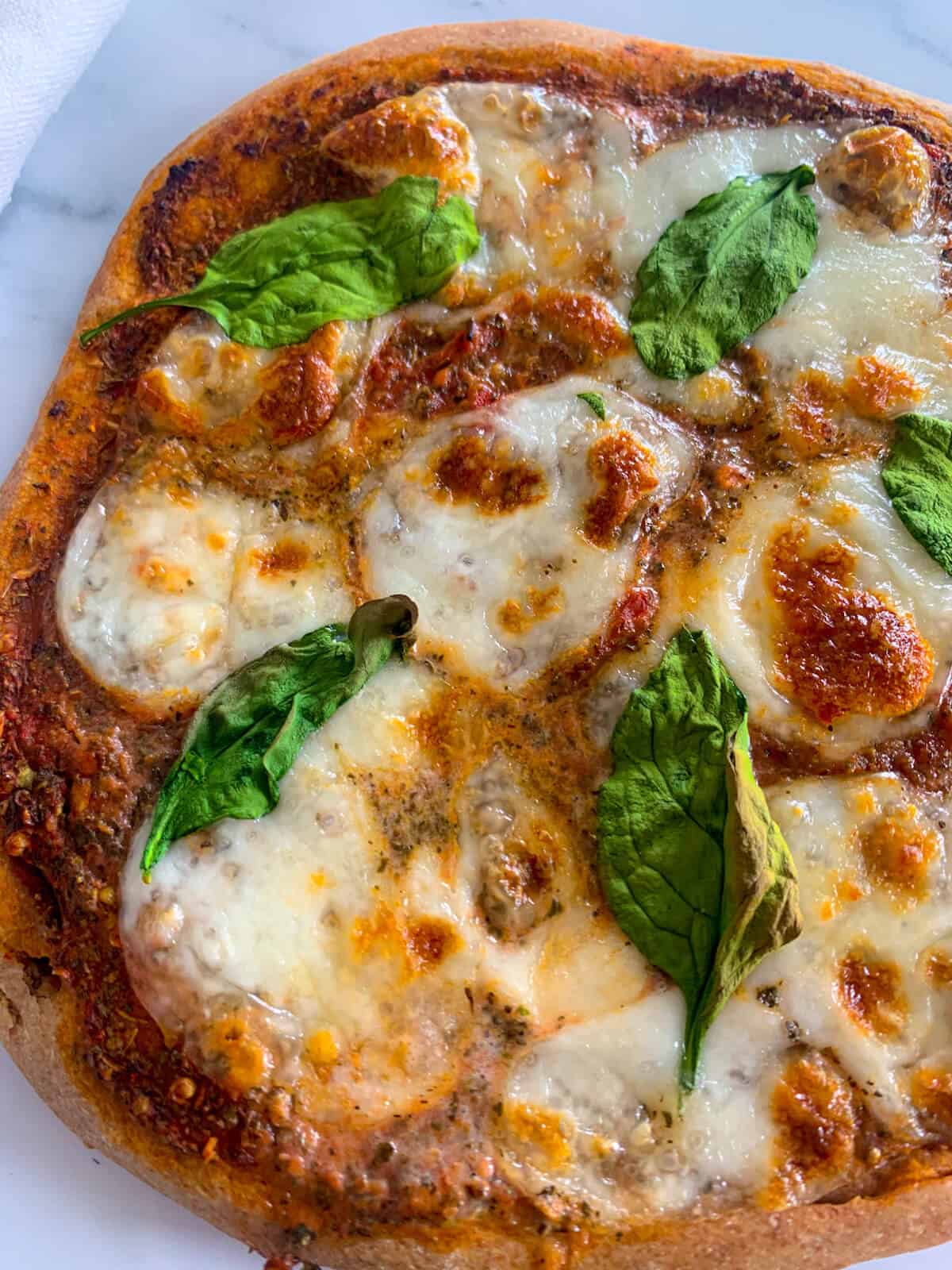
How to serve pizza for baby-led weaning and toddlers?
Note on sodium: Depending on the cheese and tomato sauce you choose 1 pizza may be considered very high in sodium (over 1333mg). Just the base contains about 600mg sodium. For babies up to 1 year of age the recommended amount is 400mg per day. Most babies would barely eat half of this pizza because it is very filling, but just in general monitor your baby's sodium intake on that day.
- 6 months old
- For baby-led weaning serve a large piece the width and length of index finger for the baby to easily grab
- Avoid spinach as topping and even though it is soft, it may be "too leafy" for them and they may struggle
- Not suitable for pureeing
- 9 months old+ (or whenever ready for pincer grasp)
- Cut up into bite size pieces or the same as for baby-led weaning
Toddlers
- Serve the same way as for adults or...
- Picky eaters – get them involved in making the pizza with you and let them pick their toppings as they are more likely to eat them that way (I would always leave a bit of plain dough with mozzarella on the side though just in case all else fails)

Tips & Tricks For The Perfect Pizza
Don't use too many toppings. If you use too many toppings it might be harder for the pizza to bake on top while it would possibly burn around the edges and the bottom at the same time. My recommendation is to do a layer of sauce, a layer of cheese and some fresh veggies on top.
Make your crust thin. When rolling out your crust, make it as thin as you can and leave a little bit thicker around the edges. This is great for holding the pizza later, especially for little ones. A thin pizza will be easily baked all around and crunchy.
Possible Homemade Wholewheat Pizza Variations
Use another flour. I usually use wholegrain spelt flour because of its great nutritional value but when I don't have any I'll use plain white flour. Avoid fat based flours (like coconut or almond) as they won't bake as well and hold the shape you want for your pizza.
Double the amount. The amount given in this recipe is for 2 smaller pizzas just because I bake them in my oven tray and this is the only way they fit to make them round. But if you want to make the square or rectangle you can either double the amount to make 2 big ones or simply not divide the initial dough ingredients into 2 parts.
Use other toppings. You can really use any toppings you like for this pizza. This recipe contains my favorite pizza choices that you can easily change. My recommendation still is not to go overboard with the toppings so that the pizza can bake evenly.
More Family Oven Meals
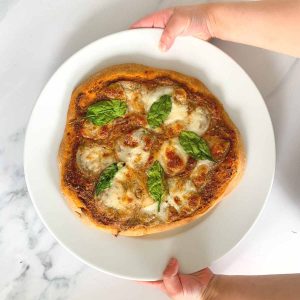
Easy Homemade Wholewheat Pizza
EQUIPMENT
- Mixer
- Silicone Brush
Ingredients
Pizza Crust
- 1¼ cup wholewheat flour 200g
- ½ cup water 120ml
- ½ teaspoon dry yeast
- ½ teaspoon salt
- ½ teaspoon sugar
- 1 tablespoon olive oil
Pizza Topping
- ½ cup tomato sauce (canned tomatoes) 100ml
- ½ lb mozarella 250g
- 3 oz spinach leaves 100g
- 2 teaspoon dried basil
- 1 teaspoon dried oregano
Instructions
Pizza Crust
- Prepare the yeast. Dissolve the sugar in the cup of warm water. Sprinkle the dried active yeast and mix with a fork. Leave in a warm place for 5 minutes until the surface is foamy.
- Prepare the crust. To the yeast mixture add the flour and salt and mix (either with your hands or iKitchen Aid Mixern a mixer). You should mix for about 8 - 10 minutes so the gluten can form in the dough. The dough should be soft and elastic but not sticky.
- Cover the dough with a clean cloth and leave to proof for at least an hour.
- Roll out your crust. Sprinkle a bit of flour on a clean surface so you can roll out the dough. Gently mix the dough again with your hands and divide into 2 equal balls. Using a rolling pin, form the shape of your pizzas. If doing a round pizza it will be about 8 inch pizza. You can also leave it a bit thicker on the edges if you want.
Pizza Topping
- Preheat the oven to 230°C / 450°F.
- Line an oven tray with parchment paper and transfer the pizza dough on the oven tray.
- Mix the tomato sauce with the dry basil and oregano and divide into 2 bowls.
- Spread the tomato puree with basil from one bowl over one pizza.
- Arrange half of the mozzarella over the tomato puree.
- Add half of the washed fresh spinach. You can choose to chop it up. I prefer to use whole spinach leaves as I mostly use baby spinach so they are smaller in size.
- Bake for about 10 minutes (until the edges are nice and crispy but not burnt).
- Repeat everything with the second pizza.
Notes
- 6 months old
- For baby-led weaning serve a a large piece the width and length of index finger for the baby to easily grab.
- Avoid spinach as topping and even though it is soft, it may be "too leafy" for them and they may struggle
- Not suitable for pureeing
- 9 months old+ (or whenever ready for pincer grasp)
- Cut up into bite size pieces or the same as for baby-led weaning
Toddlers
- Serve the same way as for adults or...
- Picky eaters – get them involved in making the pizza with you and let them pick their toppings as they are more likely to eat them that way (I would always leave a bit of plain dough with mozzarella on the side though just in case all else fails)

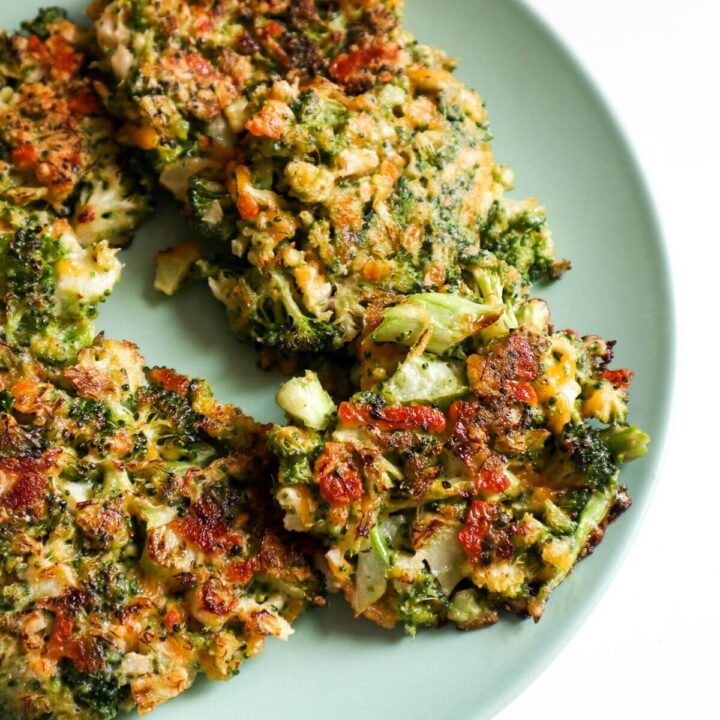
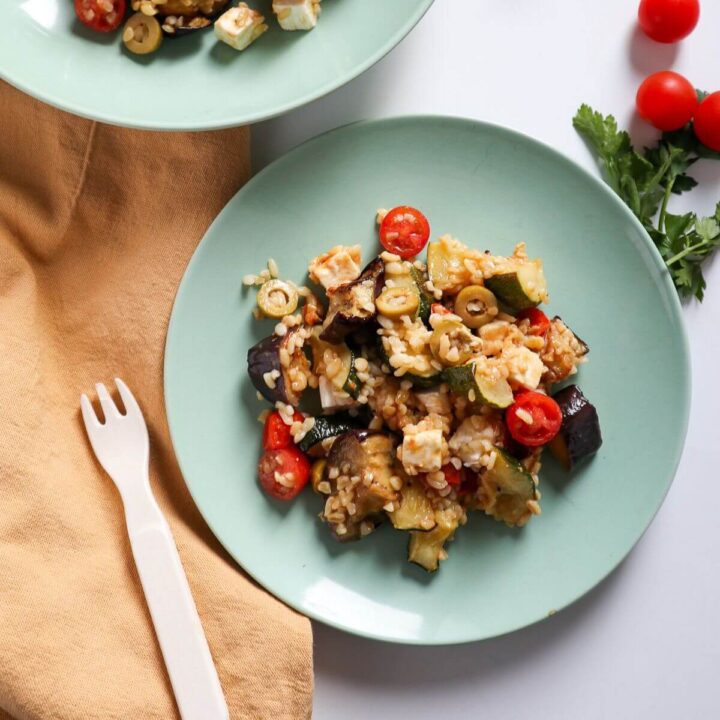
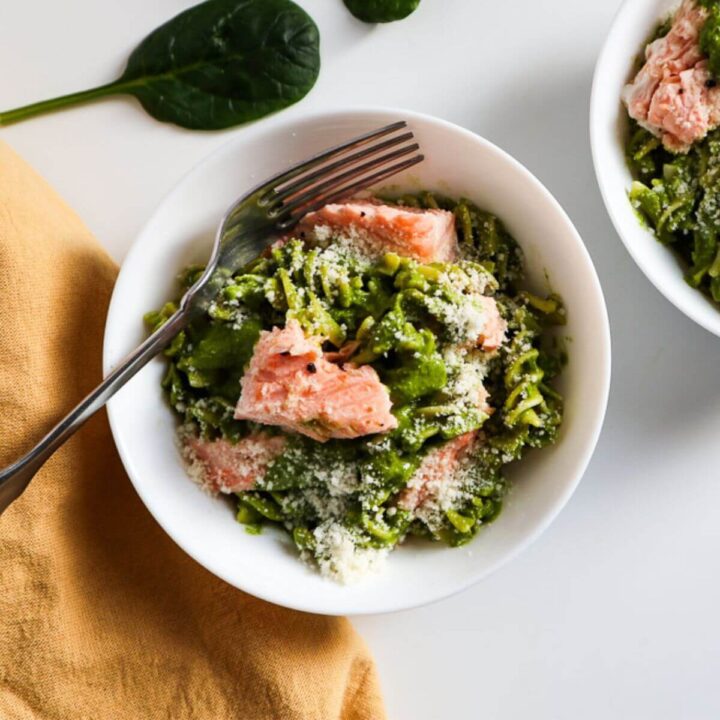
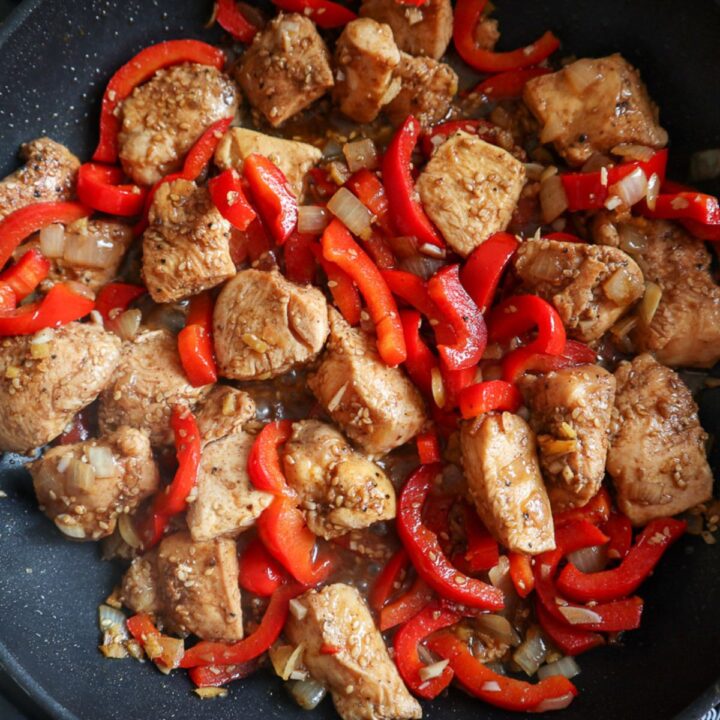
Comments
No Comments